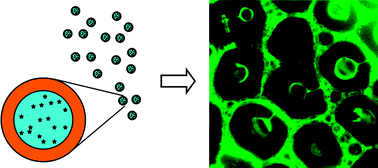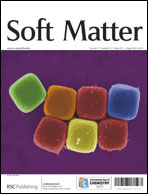Patterned biohybrid films show great potential for application in biosensing, bioconversion, and biochips. Their preparation generally involves a multistep procedure including patterned film fabrication and biomolecule immobilization. Here, we report a one-step approach to well-ordered protein-containing films by the self-assembly of a reverse emulsion (water-in-oil), which was stabilized by an amphiphilic block copolymer polystyrene-block-poly(2-hydroxyethyl methacrylate) (PS-b-PHEMA). We investigated the effects of the solvent, polymer concentration, PHEMA chain length, and substrate on the surface morphologies. The merging of the as-formed emulsion droplets, the formation and refilling of the gaps between the pores, and the hierarchical fine structures surrounding the pores were observed. Dynamic evolution results revealed the formation process of the films. One-step preparation of protein-containing films was achieved by introducing proteins into the reverse emulsion droplets. The protein pattern was further enhanced by the reduced-pressure method, which largely confined the capillary flow. This method is versatile to various water-soluble functional substances and opens a straightforward route for functional honeycomb-patterned porous films.

You have access to this article
 Please wait while we load your content...
Something went wrong. Try again?
Please wait while we load your content...
Something went wrong. Try again?


 Please wait while we load your content...
Please wait while we load your content...